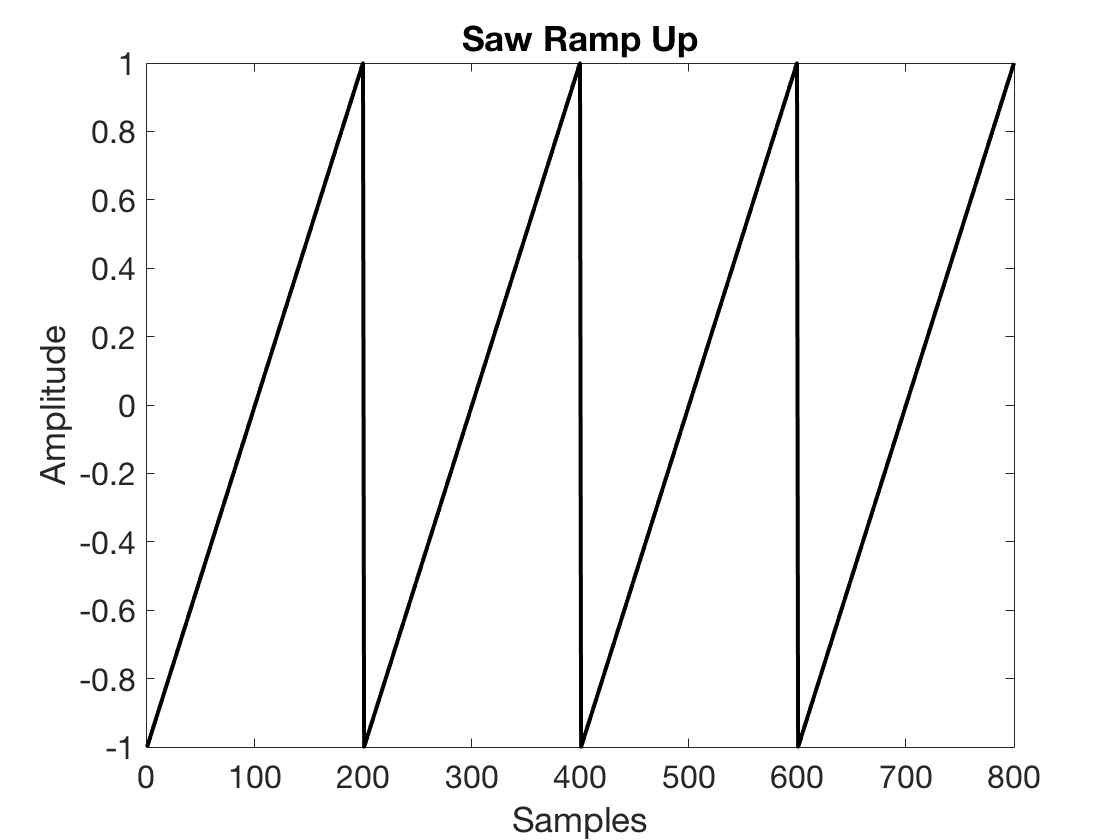Do the 2 sound waves in the picture (same frequency) sound different?
4 Answers
This comes down to the question of audibiltiy of phase in a signal. To test this, I created two signals (both with f0 = 220.5 Hz, Fs = 44100 Hz) in Matlab, a saw wave with an upwards facing ramp and one with a downwards facing ramp:
ramp_up = repmat(linspace(-1, 1, 200), 1, 440)';
ramp_dn = repmat(linspace(1, -1, 200), 1, 440)';
These are (excerpts of) the resulting signals:
You can listen to them here (careful, relatively loud):
There is no audible difference between the two. Let's now look at the magnitude and phase spectra of the signals:
We can see that the magnitude spectrum (top part of graphs) for both signals is identical, yet there are differences in the phase spectrum (bottom part of graphs). For these signals, the difference in phase seems to be inaudible. Note however that current science on this topic suggests that under lab conditions phase distortions can be audible. Further reading on the topic:
-
The phase will make more difference in synthesis when mixed with other sounds, but yeah it's going to be less than audible alone. Still an interesting subject itself. Commented Sep 6, 2021 at 4:01
They will sound exactly the same. The human ear responds to the frequency of the waveform - not the direction of the waveform itself.
-
They'll sound the same, but the frequency is a sine wave. The waveform has a harmonic spectrum (really, the waveform itself can look vastly different for the same spectrum—reverse is just one odd possible alternative). Commented Oct 12, 2021 at 4:06
One curve is the negative of the other. This is generally indistinguishable. However, playing one curve on one ear and the other on the other will likely be distinguishable from playing the same on both ears. I doubt that you could distinguish which of the curves (main part of the curve being pressure increase or pressure decrease) was which, though. Just whether one ear got to hear the inverse of the other or not.
I tested saw wave with different frequency with headphone, and the result is you can distinguish in frequency around 60Hz, it gave different pressure feeling pattern in your head when inverse the wave.
Also, it took time to the brain remember the feeling to compare with new sound input. You'll need to focus to listen for a minute (and feel the vibration inside head too), then switch to other. And then play this sound few second and switch sound and play... it change a little and you can distinguish it.
However, when change higher >60Hz or lower <60Hz, it gave the same feeling. And if you play the 60Hz on speaker, you won't able to distinguish it.
Tested on GoldWave: f(x) = (2ft%2-1)/2
f=60
When combining to stereo, one file have Left Right same, another file have Left Right mirror symmetric, you can distinguish it easily in any range frequency (must use headphone)
Same:
Mirror:







